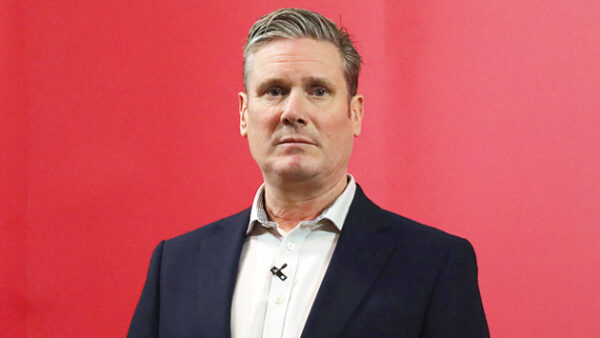
Managing your health and safety procedures has never been more important and methods should be regularly reviewed to ensure they benefit both employees and the business, says Simon Olliff, managing director of Banyard Solutions.

Simon Olliff
The latest fatal injury in the workplace statistics reveal 137 workers were killed during 2016/17, with 30 of these incidences happening in construction. In the same year, health and safety inspections in this industry fell from 9,219 in 2015/16, to 7,912.
Herbert Heinrich, born in 1886, is commonly referred to as one of the first ever workplace safety pioneers. His theory identified an underlying pattern between no injury, minor injury and serious injuries and went on to shape countless safety programmes worldwide.
Fast forward to 2014, when Professor Erick Hollnagel wrote Safety I and Safety II, a book analysing past and future safety management practices which focused on the differences between traditional approaches such as Heinrich’s and more modern perspectives.
Understanding the differences between these theories and why they have changed over time is important to implement the right health and safety process. From Safety I, Safety II to the latest Safety Differently, which theory will stand the test of time?
Heinrich advocated the mathematical relationship between different accident types and believed fatalities didn’t occur as standalone incidents. His triangle, with the 1-29-300 ratio identified that in a group of 330 similar accidents, 300 produced no injury, 29 resulted in minor injuries and 1 resulted in serious injury. Five factors had to be present for an incident to occur:
- Ancestry and social environment (character traits passed through inheritance or the impact of environment on individual causing faults);
- Fault of person;
- Unsafe act or mechanical or physical hazard;
- The accident;
- The injury.
In his 1941 book, Heinrich wrote: “The unsafe acts of persons are responsible for the majority of accidents”, reflecting widespread thinking at the time where employers believed employees were the issue. He advocated an immediate method to solving this through controlling individual activity and a longer-term strategy of training and education.
Safety I
This traditional method focuses on incidents lacking in safety processes, reviewing hazards and previous accidents, in a bid to improve overall standards. Safety I seeks an immediate cause for an incident that can be instantly controlled through procedures. Once such procedures are in place, if followed correctly, the outcome will always be positive. Called “freedom from unacceptable risk” by Hollnagel, this approach focuses on unsafe system operation rather than safe operation.
Safety II
Safety II looks at what happens when things go right, and tries to build on this activity. More in line with overall business and board level goals, it encourages senior levels of an organisation to reflect, and adjust activity accordingly all the time.
Variability and an inherent understanding of everyday functioning of the business is key. Instead of creating process that must always be adhered too, it encourages systems that can adjust to changing outcomes. Hollnagel describes it as “defining safety as the ability to succeed after varying conditions”.
Safety Differently
“Safety has become a bureaucratic accountability rather than an ethical responsibility,” said Sidney Dekker, the founder of Safety Differently in 2005. He believed that with traditional approaches, employers simply wanted to show good numbers – staff were always the issue, with all efforts focused on intervening in their behaviour.
Dekker called for the abolishment of zero harm policies and attempts to make all accidents preventable, with one resounding message: accidents are inevitable. He believed employees should be seen as the solution, relied upon to do the right thing, with this positive approach essential in changing figures.
This approach has since been implemented in the UK at Laing O’Rourke, led by John Green. This was only implemented at the beginning of this year, and so its overall success is still unknown.
Spoilt for choice?
Is having good faith in your employees to manage risk intuitively fair on them? If more senior levels of an organisation do not take accountability for health and safety as a strategic issue, answerability can be unfairly passed down to more junior colleagues and quickly create a blame culture that increases individual stress levels.
Having faith in your workforce to implement health and safety practices you’ve set is a one thing but expecting them to act instinctively on a particular occasion is something different altogether.
Without an instilled culture and adaptable systems in place how can you be sure that employees will do the right thing for your business and other members of staff? Why would you put this level of pressure on them?
Senior members of an organisation should first and foremost design a health and safety programme and accompanying processes that will support overall business strategy and employees alike.
They should also have an element of their compensation strategy linked to health and safety outcomes. Systems should be set up so that they are adaptable to changing situations, and time needs to be taken to ensure all employees are informed and involved in such a programme. This will create the health and safety culture that can really change outcomes.
Only luck separates a near miss from an incident and so time still needs to be taken to review all incidents, otherwise, keeping track on overall success and failures and potential gaps proves impossible.
Engaged, informed workforces that understand your health and safety programme and feel invested in adhering to the systems in place is the ideal situation. People are the only way positive outcomes can be truly achieved, but not necessarily in the way Dekker advocates.
Maybe in 50 years health and safety knowledge in the UK would have progressed so much that people will know what to do in any circumstance, but we are some way from this. In the meantime, reporting all incidents and applying health and safety procedures routinely across the board are imperatives.
Simon Olliff is managing director of Banyard Solutions
Image: Claudiodivizia/Dreamstime
Comments
Comments are closed.











I look forward to the results of the Laing O’Rourke initiative and hope it is widely published. The current trend, supported by the article, is to rely so much on process and procedures which in essence means paper work and this is for me the problem. More and more paperwork takes away the real health & safety message for me which is peoples attitude and perceptions to the risk. Like air bags, ABS and traction control in cars, people rely on these aids to negate their responsibility. We need to engage more with the people on the sites not turn them off by issuing reams of paper. In addition we need to look at why they make some of the choices they make and the simple answer is that senior management talk a lovely job yet often do not supply the right equipment or time to carry out the works. As a project manager I come across this situation many times, teams trying to rush through the job as they have to be somewhere else or arrive with in adequate plant to carry out the works safely. Safety really does need to start at the top, that is the client and the companies allowing sufficient time and monies to carry out the works safely.
Is it not policy that every member of staff or employee is trained to Health and Safety standards before they are allowed on site and wear proof of that qualification? or is that only a paper transaction.